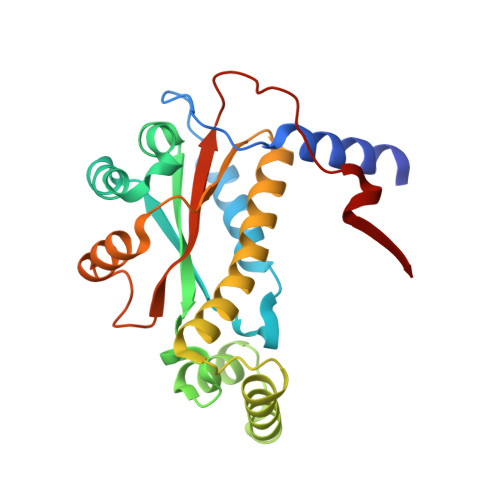Biochemical, kinetic, and structural characterization of a Bacillus tequilensis nitroreductase.
Russo, S., Rozeboom, H.J., Wijma, H.J., Poelarends, G.J., Fraaije, M.W.(2024) FEBS J 291: 3889-3903
- PubMed: 38946302
- DOI: https://doi.org/10.1111/febs.17210
- Primary Citation of Related Structures:
8QYG - PubMed Abstract:
Nitroreductases (NRs) are NAD(P)H-dependent flavoenzymes that reduce nitro aromatic compounds to their corresponding arylamines via the nitroso and hydroxylamine intermediates. Because of their broad substrate scope and versatility, NRs have found application in multiple fields such as biocatalysis, bioremediation, cell-imaging and prodrug activation. However, only a limited number of members of the broad NR superfamily (> 24 000 sequences) have been experimentally characterized. Within this group of enzymes, only few are capable of amine synthesis, which is a fundamental chemical transformation for the pharmaceutical, agricultural, and textile industries. Herein, we provide a comprehensive description of a recently discovered NR from Bacillus tequilensis, named BtNR. This enzyme has previously been demonstrated to have the capability to fully convert nitro aromatic and heterocyclic compounds to their respective primary amines. In this study, we determined its biochemical, kinetic and structural properties, including its apparent melting temperature (T m ) of 59 °C, broad pH activity range (from pH 3 to 10) and a notably low redox potential (-236 ± 1 mV) in comparison to other well-known NRs. We also determined its steady-state and pre-steady-state kinetic parameters, which are consistent with other NRs. Additionally, we elucidated the crystal structure of BtNR, which resembles the well-characterized Escherichia coli oxygen-insensitive NAD(P)H nitroreductase (NfsB), and investigated the substrate binding in its active site through docking and molecular dynamics studies with four nitro aromatic substrates. Guided by these structural analyses, we probed the functional roles of active site residues by site-directed mutagenesis. Our findings provide valuable insights into the biochemical and structural properties of BtNR, as well as its potential applications in biotechnology.
Organizational Affiliation:
Molecular Enzymology Group, University of Groningen, The Netherlands.


















